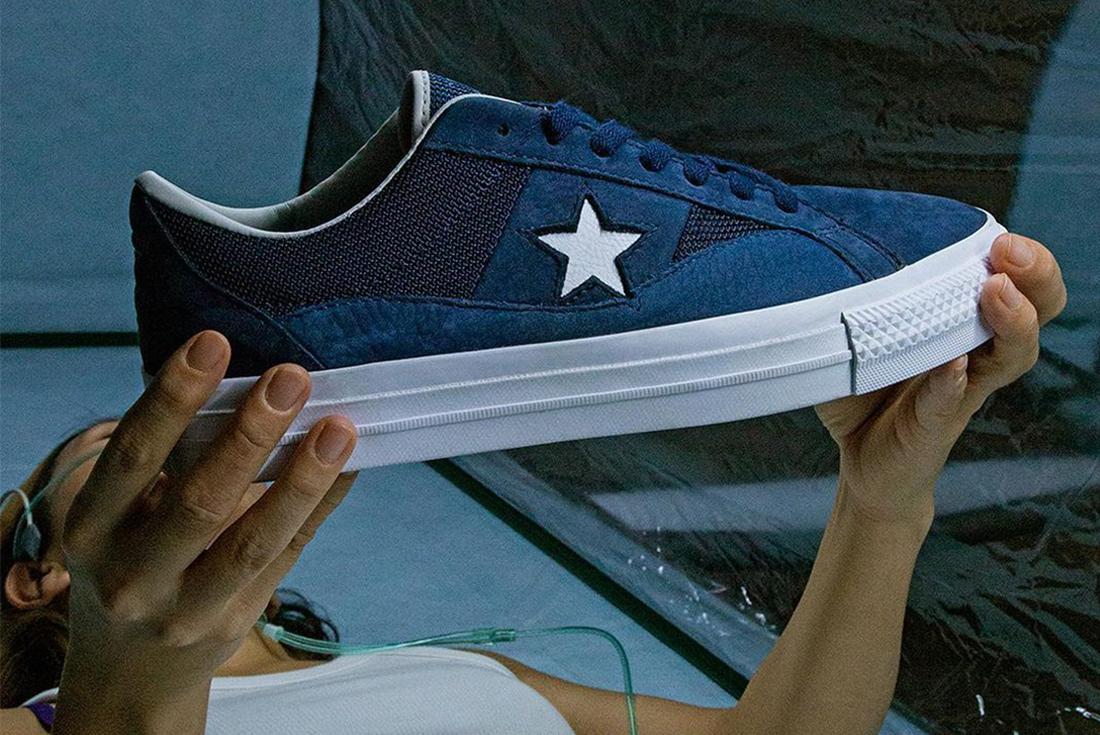The Converse One Star: Still Burning Bright in the Sneaker Cosmos
The is still a guiding light for skaters and style savants across the globe. After a brief but bullish display on the NBA hardwood in the early 1970s, the One Star later found itself reimagined on the streets of Tokyo, the vintage model extolled as an emblem of American varsity fashion.
But it wasn’t until the 1990s that the One Star truly began to shine. And this time, it was at the skatepark. Roused from its slumber by the beloved rag Thrasher, the One Star kicked and pushed its way to become one of the industry’s breakaway success stories of the decade.
Now, reinvigorated by the CONS skate team and a growing roster of collaborators, the One Star is ready to carve up the competition all over again. So grab your board and basketball: it’s time to take a closer look at the emanating impact of one of the brightest stars in the sneakersphere.
Dr J and the Hardwood Heavyweights
Converse were consistently outmuscling their opponents during basketball’s nascent years. For decades, the was doing all the scoring on the hardwood, with NBA Hall of Famer Wilt Chamberlain loading the stat sheet.
In 1974, it was time to introduce the newest star to their roster.
‘The One Star was our next step beyond the Chuck Taylor’, says Sam Smallidge, Archive Manager at Converse. ‘It was the first time we’d used leather. Up until then, it was all canvas. The One Star had all the comfort and performance of the All Star, plus the evolution of the leather material.’
Originally dubbed the Suede Leather All Star, the sawn-off version was defined by its vulcanised rubber soles, new leather construction, and single star emblazoned on the lateral sides. Also boasting a lighter price tag, the model was laced by the likes of Julius ‘Dr J’ Erving, Bernard King, and several other professional players looking for a more streamlined silhouette. But after just two years, the model was benched in favour of the Pro Leather – a sneaker offering a newer, more responsive cup sole.

Despite sitting dormant in the United States for a number of years, the One Star nevertheless found a robust pulse in unexpected markets. In fashion meccas like Harajuku, Japanese acolytes of Americana desperately rifled through stores in search of the One Star and other sartorial remnants from the 1970s. Praised for its streamlined suede construction and connection to the Ivy League style, Japan kept the One Star’s glow strong despite the interest waning stateside.
But this was all about to change.
Hitting the Halfpipe: The Comeback Kid
In 1993, it was time for the remodelled Converse One Star’s rip-roaring comeback. And this time, it was the skaters and street urchins that gave the model its eye-peeling momentum.
Broadcast to the world via Spike Jonze’s skate opus Mouse (where tech extraordinaire Guy Mariano famously laced the sneaker) and Thrasher magazine in the mid-90s, the One Star was getting huge air. With a burgeoning skate scene, an attractive price point and a better board feel, the One Star was blazing.
‘Thrasher was a national publication, so it pushed the One Star’s influence across the entire US’ – well beyond just the East Coast,’ says Smallidge. ‘And after several lifestyle iterations, you really see the One Star grow into its own little lifestyle brand within Converse’.

Further amplified by the ear-ringing influence of Seattle grunge and its disgruntled godfather Kurt Cobain, the One Star was now a counterculture anti-hero. By the late 90s, it was entering a new millennium with sole-destroying speed.
To Wish Upon a One Star: The 21st Century
The Converse One Star is maintaining impressive momentum in the 21st century thanks to a steady run of collaborations and an ever-expanding roster of CONS team riders. Recruiting Supreme skate duo Sean Pablo and Sage Elsesser, the team was given some shiny new hardware with the debut of a skate-specific One Star in 2015. After experimenting with several different performance technologies, the Converse team landed on CONS traction rubber outsoles and moulded CX sockliners, adding unprecedented levels of comfort and impact absorption.
On the collaborative front, the One Star also wasn’t warming the bench. Stateside raconteurs like and have repurposed the silhouette for a streetwear-savvy audience, while godfather of Ura-Harajuku fashion has reinforced the model’s strong connections to Japan.
Not strictly limited to the model’s profound success in US and Japanese markets, the One Star has also stamped its passport all over the world, collaborating with Dutch masters Hong Kong’s , Milan’s and many, many more.
As we quickly approach the One Star’s 50th anniversary, Matt Sleep, head of collaborations at Converse, is keen to continue to bring a diverse portfolio.
‘You’re going to see a very heavy roster, moving through skate, lifestyle, fashion and streetwear. We’re going to be touching on the historic elements that made the One Star so popular.’
With a radiant constellation of collaborations, skaters and devotees the world over, the One Star continues to emit a glow that reaches both new and established sneaker cultures around the globe.
Ready to go star-gazing? Shoot over to Converse to shop all the brightest sneakers in the galaxy.
